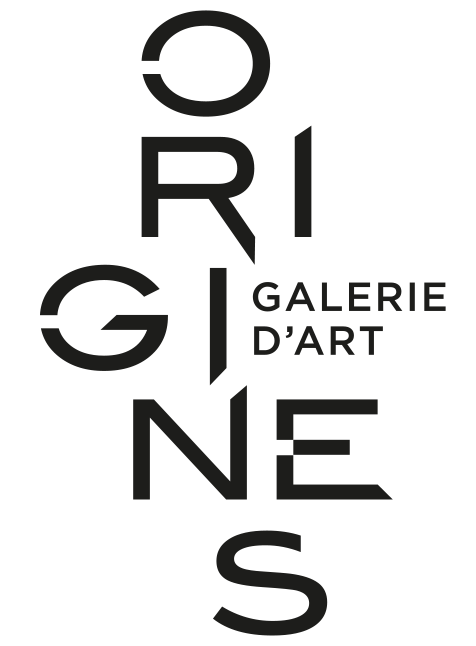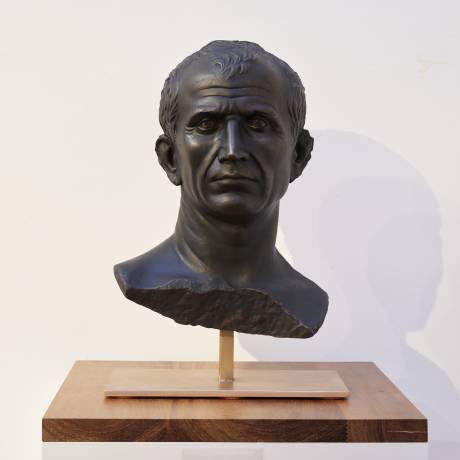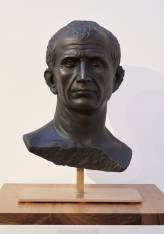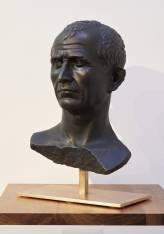Buste de Jules César, Bronze
Buste de Jules César, Bronze
Portrait of Julius Caesar found in the Rhône, a “unicum”
On August 17, 2007, during a prospecting dive in the troubled waters of the Rhône, in Arles, the French underwater archaeologist Luc Long and his team unearthed one of the most famous Roman portraits, that of Julius Caesar. The life-size marble bust lies on the slope, face down, at a depth of 7 m, on the right bank of the river. It is located near the ferry terminal (faubourg de Trinquetaille) and seems to be part of a lapidary group made up of many other marble sculptures. A first very precise 3D scan is made by photogrammetry to generate a useful copy for the comparative study of the object, while the original is kept in a safe place at the musée de l’Arles antique Very quickly, leading international specialists confirm that it is indeed a representation of the conqueror of Gaul, while the news of the discovery make the front page of the national and international press and spread like wildfire.
This extraordinary portrait, made during Caesar's lifetime in the hyperrealist style that characterized the bourgeois verism of the end of the Republic, is obviously the work of a great artist, probably that of a Greek practitioner around the 50-45s BC, during the foundation of the Julian city of Arles. Its dazzling marble, with an extremely fine grain, extracted from the quarries of the Dokiméion, in central Phrygia (present-day Turkey), was then one of the most reputed ancient marbles.
The discovering archaeologist, Luc Long, who directed the excavations, chief heritage curator and member of the Marseille Academy of Sciences, is also an artist and a sculptor. A fan of augmented reality, he decided to create a high-quality limited series of his César du Rhône in bronze.





